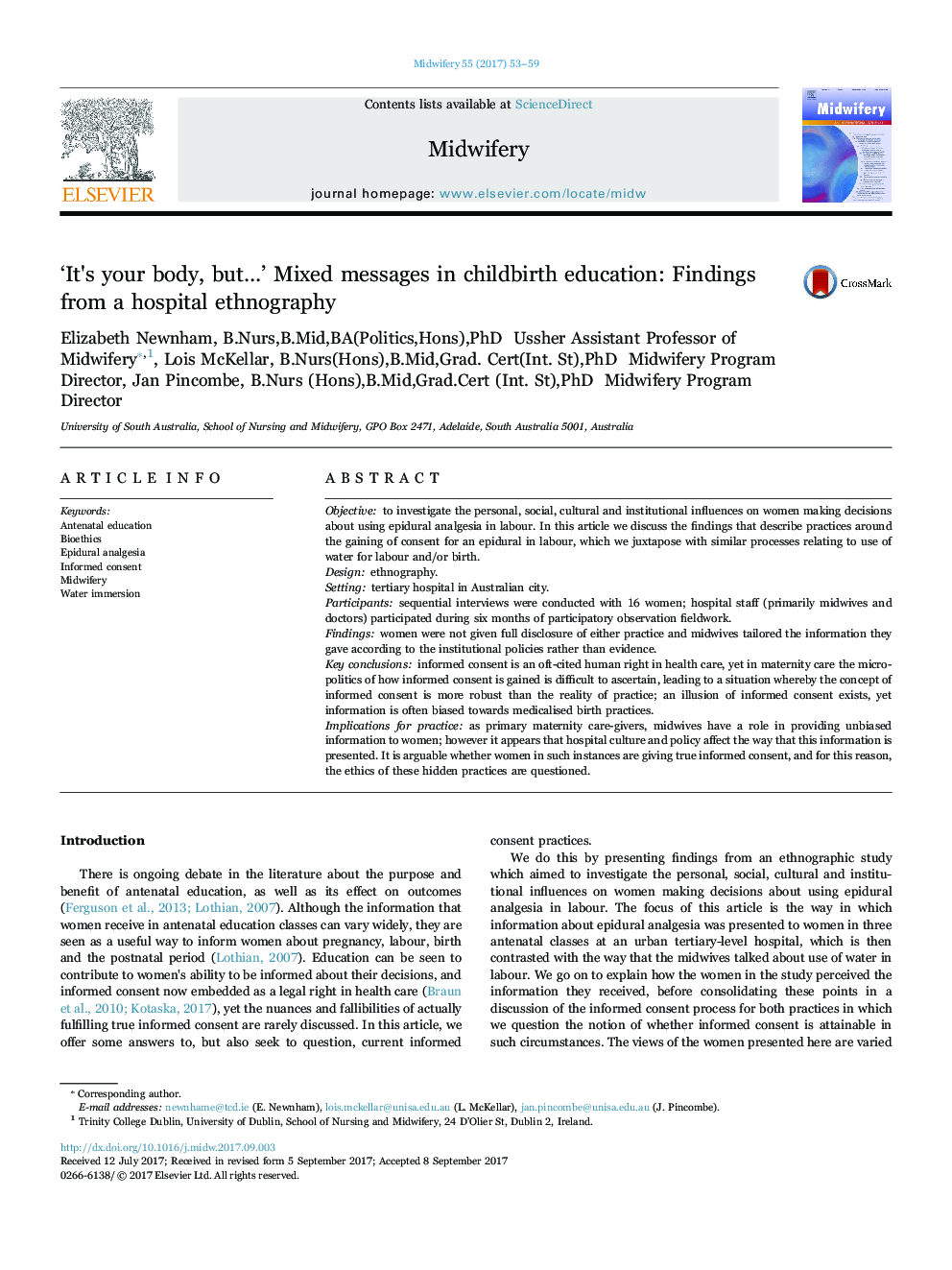| Article ID | Journal | Published Year | Pages | File Type |
|---|---|---|---|---|
| 5122243 | Midwifery | 2017 | 7 Pages |
â¢Risks of epidural analgesia are not fully disclosed to womenâ¢Midwives tailor information given to women to conform with hospital policyâ¢It is questionable whether informed consent is achievable in these circumstancesâ¢Midwives are ethically bound to provide evidence-based informationâ¢Practice interactions can be used to uphold or resist biomedical discourse
Objectiveto investigate the personal, social, cultural and institutional influences on women making decisions about using epidural analgesia in labour. In this article we discuss the findings that describe practices around the gaining of consent for an epidural in labour, which we juxtapose with similar processes relating to use of water for labour and/or birth.Designethnography.Settingtertiary hospital in Australian city.Participantssequential interviews were conducted with 16 women; hospital staff (primarily midwives and doctors) participated during six months of participatory observation fieldwork.Findingswomen were not given full disclosure of either practice and midwives tailored the information they gave according to the institutional policies rather than evidence.Key conclusionsinformed consent is an oft-cited human right in health care, yet in maternity care the micro-politics of how informed consent is gained is difficult to ascertain, leading to a situation whereby the concept of informed consent is more robust than the reality of practice; an illusion of informed consent exists, yet information is often biased towards medicalised birth practices.Implications for practiceas primary maternity care-givers, midwives have a role in providing unbiased information to women; however it appears that hospital culture and policy affect the way that this information is presented. It is arguable whether women in such instances are giving true informed consent, and for this reason, the ethics of these hidden practices are questioned.
